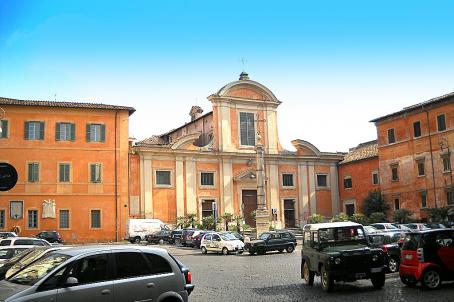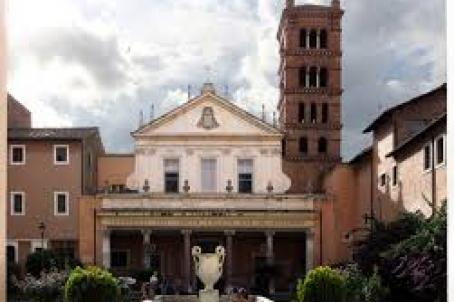Chiesa di Sant'Anselmo all'Aventino
The church of Sant'Anselmo all'Aventino, despite its appearance, is a recent construction. It was built in a neo-Romanesque style by Francesco Vespignani between 1892 and 1896. The interior consists of a nave and two aisles divided by granite columns, a latticed ceiling and an apse decorated with mosaics; the crypt with five aisles is particularly large. The church is built on the remains of a Roman Domus of the 2nd-3rd century AD, which can be seen in the basement of the church.






